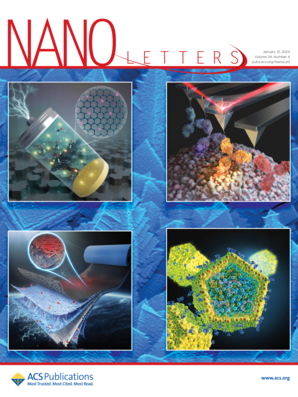Phase Identification of Layered GaS by Polarization-Dependent Angle-Resolved Oblique Incident Second Harmonic Generation
IF 9.6
1区 材料科学
Q1 CHEMISTRY, MULTIDISCIPLINARY
引用次数: 0
Abstract
Layered gallium sulfide (GaS), a material that has attracted much attention in the field of micro-nano optoelectronics recently, is predicted to have four stable stacking orders (β-, γ-, ε-, and δ-GaS) with close formation energies; β-GaS is the most considered, and other phases are seldom discussed. However, considering the ease of the phase transition in few-layer materials, the lack of accurate crystal phase identification prevents a full understanding of this material for specific applications requiring other crystal phases. Here, we report a novel in situ and nondestructive method to identify the phase of layered GaS by polarization-dependent angle-resolved oblique incident second harmonic generation (SHG). Through this method, we discovered the presence of γ-GaS with a portion of approximately one-sixth of the total samples. Our work has laid a foundation for the application of GaS, and our approach has established a technical guarantee for structural analysis of van der Waals layered materials.

求助全文
约1分钟内获得全文
求助全文
来源期刊

Nano Letters
工程技术-材料科学:综合
CiteScore
16.80
自引率
2.80%
发文量
1182
审稿时长
1.4 months
期刊介绍:
Nano Letters serves as a dynamic platform for promptly disseminating original results in fundamental, applied, and emerging research across all facets of nanoscience and nanotechnology. A pivotal criterion for inclusion within Nano Letters is the convergence of at least two different areas or disciplines, ensuring a rich interdisciplinary scope. The journal is dedicated to fostering exploration in diverse areas, including:
- Experimental and theoretical findings on physical, chemical, and biological phenomena at the nanoscale
- Synthesis, characterization, and processing of organic, inorganic, polymer, and hybrid nanomaterials through physical, chemical, and biological methodologies
- Modeling and simulation of synthetic, assembly, and interaction processes
- Realization of integrated nanostructures and nano-engineered devices exhibiting advanced performance
- Applications of nanoscale materials in living and environmental systems
Nano Letters is committed to advancing and showcasing groundbreaking research that intersects various domains, fostering innovation and collaboration in the ever-evolving field of nanoscience and nanotechnology.
 求助内容:
求助内容: 应助结果提醒方式:
应助结果提醒方式:


